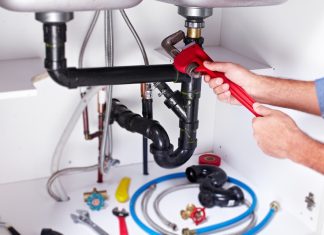Whether you’ve just moved into your new home or are considering alternative heating and cooling options, there’s an efficient solution for maintaining a comfortable indoor environment without central heating. The solution is mini-split systems.
Here we’ll highlight some reputable manufacturers, and guide finding a reliable HVAC supplier near you. So, let’s take a look at the benefits of mini-split systems for your home.
Finding a Reliable HVAC Supplier Near You
When it comes to purchasing a mini-split system, it’s find a reliable HVAC supplier that offers quality products and excellent customer service. AC Direct is an online heating and air conditioning wholesaler that provides a wide selection of HVAC products, including mini split systems, at competitive prices. Ask your realtor for an HVAC supplier near me and they’ll be able to suggest some great options through their contacts.
By considering mini split systems for heating and cooling your home, you can enjoy energy-efficient comfort, zoned temperature control, improved indoor air quality, and easy installation. Reputable manufacturers like Daikin, Mitsubishi Electric, and LG offer a range of reliable mini-split systems to suit your specific needs. When searching for a dependable supplier, you’ll find a few that can be excellent choices with comprehensive selections and competitive prices. Embrace the versatility and efficiency of mini splits to create a comfortable living environment in your home.
The Ins and Outs Mini Split Systems
Mini-split systems, also known as ductless mini-split systems, are versatile heating and cooling solutions that offer individualized temperature control for different zones or rooms in your home. Unlike traditional central heating systems, mini splits do not rely on ductwork to distribute conditioned air. Instead, they consist of two main components, an outdoor unit and one or more indoor units.
The outdoor unit houses the compressor and condenser, which are responsible for cooling or heating the refrigerant. The indoor units, which can be wall-mounted, ceiling-mounted, or floor-mounted, release the conditioned air into the respective zones. Each indoor unit is connected to the outdoor unit through refrigerant lines and electrical wiring, allowing for independent temperature adjustments in different areas of your home.
Benefits of Mini Split Systems
Mini-splits offer exceptional energy efficiency because they allow you to heat or cool specific areas of your home rather than wasting energy on unoccupied rooms. Additionally, they do not suffer from the energy losses associated with ductwork, resulting in reduced energy consumption and lower utility bills.
With mini splits, you have the flexibility to customize the temperature settings for each zone or room in your home. This ensures optimal temps for everyone while avoiding energy waste in areas that are not in use.
Installing a mini-split system is typically less complicated and invasive compared to retrofitting a central heating system. The absence of ductwork eliminates the need for extensive renovations, making mini-splits a convenient option for both new and existing homes.
Mini-splits are equipped with advanced filtration systems that help remove dust, allergens, and other airborne particles from the indoor air. This promotes healthier indoor air quality, particularly for individuals who suffer from allergies or respiratory conditions.
Reputable Mini Split Manufacturers
When considering mini split systems, it’s essential to choose products from reputable manufacturers known for their quality and reliability. Here are a few well-regarded manufacturers in the HVAC industry.
First, we have Daikin, a global leader in heating, ventilation, and air conditioning solutions. They offer a wide range of energy-efficient mini-split systems designed to meet various residential needs.
Then there is Mitsubishi Electric, which is renowned for its technologically advanced mini split systems. Their products are known for their quiet operation, energy efficiency, and innovative features.
Finally, there is LG, which manufactures a diverse lineup of mini splits with cutting-edge technology and sleek designs. Their systems prioritize energy efficiency, comfort, and user-friendly controls.
But is This a DIY Type of Situation? Absolutely!
Installing a mini-split system is a relatively straightforward process that can be completed by a professional HVAC technician or any savvy DIYer. The installation begins with a site assessment, where the technician evaluates your home to determine the optimal locations for the outdoor and indoor units. Factors such as room size, layout, and architectural constraints are taken into consideration. There are several video tutorials available to help with how to do this.
Once the assessment is completed, the outdoor unit is mounted. It is typically placed on a solid base, such as a concrete pad or wall bracket, ensuring proper airflow and easy access for maintenance. The next step involves running refrigerant lines and electrical wiring from the outdoor unit to each indoor unit. These lines are concealed within walls or ceilings to maintain a clean appearance.
The indoor units are then installed in the designated areas within each zone or room. This may involve drilling holes for the refrigerant lines and wiring, as well as securing the units to the wall, ceiling, or floor. Once the indoor units are in place, the refrigerant lines and electrical wiring are connected to the corresponding ports on the indoor and outdoor units.
This establishes the proper flow of refrigerant and enables communication between the units.
After the installation is complete, test the system to ensure it is functioning correctly. Verify the functionality of the controls and conduct airflow tests. This thorough testing and commissioning process ensures that the mini-split system is operating efficiently and effectively.
Mini-split systems offer the advantage of zoning, which allows for individualized temperature control in different zones or rooms of your home. A zone refers to a specific area controlled by a separate indoor unit. By dividing your home into zones, you can customize the temperature settings based on the preferences and occupancy of each area.
For example, you can have a zone for the living room, another for the bedrooms, and a separate zone for the kitchen. This flexibility enables you to set different temperatures in each zone, catering to the specific comfort requirements of the occupants. If certain areas are unoccupied, you can easily turn off the mini-split in those zones, conserving energy and reducing utility costs.
Zoning not only provides personalized comfort but also enhances energy efficiency by eliminating the need to heat or cool the entire house when only specific areas are in use. Mini split systems with zoning capabilities often come with individual thermostats or remote controls for each indoor unit, making it convenient to adjust temperatures in each zone.
The installation of mini-split systems involves a site assessment, mounting the outdoor and indoor units, connecting refrigerant lines and electrical wiring, and thorough testing. Zoning is a key feature of mini-split systems, allowing for personalized temperature control in different areas of your home. Consider reputable manufacturers like Daikin, Mitsubishi Electric, and LG when choosing a mini-split system, and explore options provided by AC Direct for quality products and competitive prices. Embrace the benefits of mini split systems to enjoy efficient and customizable heating and cooling in your home.
Remember, heating and cooling your home doesn’t have to be a challenge without central heating. Mini splits provide an effective solution that combines comfort, energy efficiency, and flexibility. So, take the next step toward a cozy home by exploring the options offered by mini split systems and finding the perfect HVAC supplier near you.















